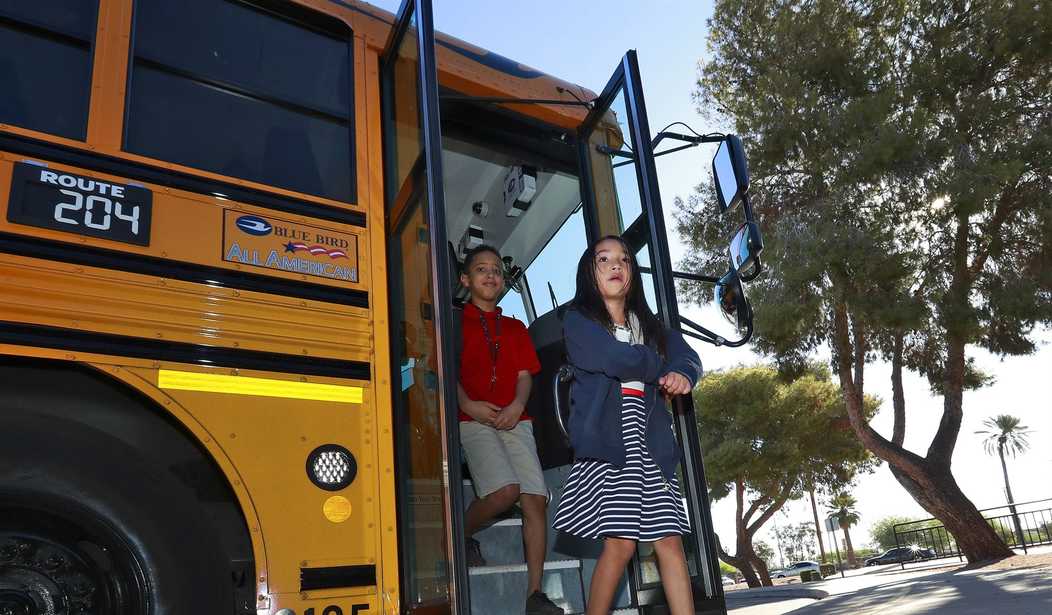Not having a school-age child, I haven’t been following the crisis in student transportation. It shocked me to find out that 92% percent of education and transportation leaders responding to a nationwide survey reported that their operations are constrained by driver shortages, compared with 88% last year and 78% in 2021.
The problem came to the fore in Louisville, Ky., on the first day of school this year when a new software program that was supposed to figure out how to transport all the kids needing to take the bus became a nightmare for parents. Some kids didn’t get dropped off after school until 10 p.m. One poor little girl rode around in a bus for hours until a driver just threw her off the bus. It turns out that the little girl and her family had just moved into the home, and the child was unfamiliar with the neighborhood.
It’s believed that transportation issues have directly led to the explosion in student absenteeism. Three in four respondents in a survey by student bus company HopSkipDrive said that school transportation woes had a direct impact on student attendance.
“Special needs” children are required by law in most states to receive transportation to their school. The shortage of drivers for these routes is preventing some of these kids from going to school.
“This is a suburban problem, this is an urban problem, this is a rural problem,” said Joanna McFarland, who co-founded HopSkipDrive almost a decade ago as a mom desperate for kid transportation services. “It’s not like we’re seeing this in one particular state, or like this is cities versus rural. This is something that almost every single school district is facing. … It is affecting everything, everywhere.”
Jodi Henderson McInerney, the executive director of a high-poverty charter school in Asbury Park, New Jersey, has witnessed the powerful role school buses play in kids’ achievement. Years ago, attendance at the school was inconsistent, so the school started surveying parents and students. “They just physically couldn’t get there,” Henderson McInerney said.
So the school prioritized providing transportation and attendance immediately began to improve. And the trends were reinforced as the school became more intentional about who to put behind the wheel and elsewhere on the bus. The drivers who shuttle students around are familiar members of the community, and many speak the students’ home languages of Spanish or Creole. The school also puts resource officers on the buses to provide added security. In addition to the lack of buses and drivers, one of the main reasons kids weren’t showing up to school was the violence in some of their neighborhoods.
School bus drivers, advocates stress, do much more than getting kids from Point A to Point B.
Some of the issues potential drivers face include the numerous certifications and background checks the prospective drivers must undergo. There’s the split-shift schedule, where some drivers start work before dawn and finish after dark. And there’s the abysmally low pay and sometimes stressful working conditions. For a lot of prospective drivers, it’s just not worth it.
“Employers want to improve retention,” Erica Groshen, a senior economics adviser at the Cornell University School of Industrial and Labor Relations, said. “Offering a way for the workers to have some voice, and interviewing workers as they exit, can be a very important way for them to figure out solutions.”
Tomás Fret, president of Local 1181 of the Amalgamated Transit Union, started driving buses in 1996. “When I started the job, workers were able to send their kids to college.” Costs for college have shot through the roof while bus driver pay has remained fairly stagnant.
The Louisville opening day transportation nightmare — as most efforts to find a technological solution to a non-technical problem go — was well-meant but disastrously executed.
Public school officials in Jefferson County were trying their own creative solution — which helped lead to the opening-day fiasco. They had hired AlphaRoute, a Boston-area engineering firm that specializes in routing software, to design new routes for the school year.
The goal, the district said, was to adjust for fewer drivers, but the effort resulted in longer routes.
The correlation between regular, reliable transportation to school and absenteeism can’t be brushed aside. With absenteeism at crisis levels, the last thing a kid should have to worry about is whether he will get to school every day.










